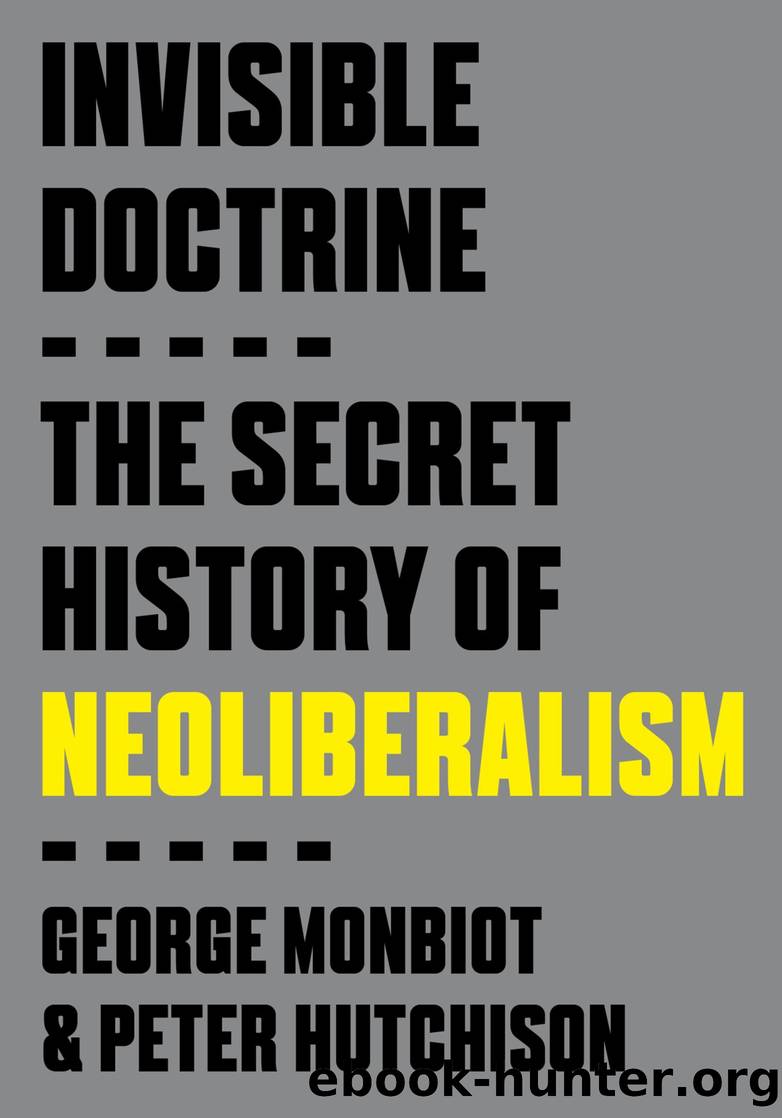Invisible Doctrine by George Monbiot & Peter Hutchison

Author:George Monbiot & Peter Hutchison [Monbiot, George & Hutchison, Peter]
Language: eng
Format: epub
Publisher: Crown
Published: 2024-06-04T00:00:00+00:00
21.
MOBILIZATION: A CASE STUDY
No part of the neoliberal program can succeed without the stifling of hope. One of the most powerful aspects of neoliberalism is the hopelessness it induces by persuading us that âthere is no alternativeââa phrase Margaret Thatcher used so often that it was condensed to an acronym, âTINA.â By presenting this extreme doctrine as if it were nothing but a description of the natural orderâthe way things are and have to beâthe Neoliberal International persuaded many of us that no other strategy was possible.
âThereâs no money.â âIt would interrupt growth.â âThe people wouldnât stand for it.â Governments repeatedly seek to persuade us that they are incapable of action, unable to govern, that their hands are tied, that their uselessness is baked in. They canât address poverty. They canât ensure that the elderly, or the sick, or the addicted are properly looked after. They canât prevent the collapse of roads, bridges, or school buildings, let alone of ecosystems. Itâs all beyond their control. Instead, they teach us to be hopeless and to expect no reliefâaccelerating the diseases of despair, the eco-anxiety, the nihilism, and the apathy to which so many people understandably succumb.
But governments have repeatedly proven to be capable of decisive actionâwhen they choose to be or when circumstance forces their hand. Whenever the âfree marketâ has stumbled, government has intervened without hesitation, spending whatever it takes to rescue neoliberalism from its own disasters. Examples include bailing out Chrysler in 1980, the airline industry bailout in 2001, the savings and loan crisis of 1989, and the financial crisis of 2008. During the Covid-19 pandemic, money that states had sworn they didnât have suddenly and magically materialized. Governments discovered they could govern (albeit with varying degrees of competence). People turned out to be prepared, when they felt they were contributing to the common good, to change their behavior radically.
But the problems we face today require even more ambitious intervention: a fair, prosperous, sustainable society cannot materialize under current conditions. We need a radical transformation. Impossible? Letâs take a look at what happened when the United States joined the Second World War.
Before the US declared war, President Franklin Roosevelt had begun to draft troops and build his âarsenal of democracyâ: the materiel with which he supplied the Allied forces. To âoutbuild Hitler,â he called for levels of production previously considered impossible. But, following the Japanese attack on Pearl Harbor on December 7, 1941, the impossible was turnedâthrough sheer force of willâinto reality.
The day after the attack, Roosevelt requested a declaration of war from Congress. Once it was in hand, he immediately set to work reorganizing not only the government but the entire nation. He launched a series of agencies that were overseen and coordinated through simple but effective measures, such as the Controlled Materials Plan (CMP)âa system of quotas, priorities, and restrictions on the use of materials to ensure efficient production and resource allocation.[1]
The president introduced, for the first time in US history, general federal income taxes. The government rapidly raised the top rate until, in 1944, it reached 94 percent.
Download
This site does not store any files on its server. We only index and link to content provided by other sites. Please contact the content providers to delete copyright contents if any and email us, we'll remove relevant links or contents immediately.
International Integration of the Brazilian Economy by Elias C. Grivoyannis(98912)
The Radium Girls by Kate Moore(11972)
Turbulence by E. J. Noyes(7978)
Nudge - Improving Decisions about Health, Wealth, and Happiness by Thaler Sunstein(7657)
The Black Swan by Nassim Nicholas Taleb(7056)
Rich Dad Poor Dad by Robert T. Kiyosaki(6513)
Pioneering Portfolio Management by David F. Swensen(6256)
Man-made Catastrophes and Risk Information Concealment by Dmitry Chernov & Didier Sornette(5956)
Zero to One by Peter Thiel(5732)
Secrecy World by Jake Bernstein(4700)
Millionaire: The Philanderer, Gambler, and Duelist Who Invented Modern Finance by Janet Gleeson(4421)
The Age of Surveillance Capitalism by Shoshana Zuboff(4245)
Skin in the Game by Nassim Nicholas Taleb(4202)
Bullshit Jobs by David Graeber(4140)
The Money Culture by Michael Lewis(4134)
Skin in the Game: Hidden Asymmetries in Daily Life by Nassim Nicholas Taleb(3961)
The Dhandho Investor by Mohnish Pabrai(3722)
The Wisdom of Finance by Mihir Desai(3694)
Blockchain Basics by Daniel Drescher(3540)
